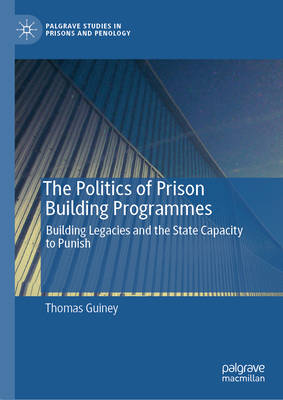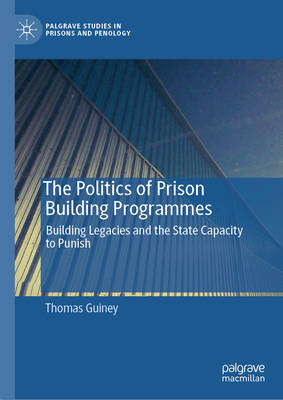
- Afhalen na 1 uur in een winkel met voorraad
- Gratis thuislevering in België vanaf € 30
- Ruim aanbod met 7 miljoen producten
- Afhalen na 1 uur in een winkel met voorraad
- Gratis thuislevering in België vanaf € 30
- Ruim aanbod met 7 miljoen producten
Zoeken
The Politics of Prison Building Programmes
Building Legacies and the State Capacity to Punish
Thomas Guiney
€ 167,95
+ 335 punten
Omschrijving
Prison building has moved from the margins to the mainstream of our penal politics. In recent years the UK Government has invested billions in new prison building and the main political parties are currently locked into a penal arms race over who can, and who will, build the most additional prison places in England and Wales. Prison building is now widely lauded as the definitive policy solution to the current prisons crisis and yet, this remains an elusive sphere of penal policymaking. Academic research remains in its infancy, and we still know very little about how these large investment decisions are made, by whom and for what reasons. In seeking to shine a light on this subterranean and largely closed sphere of contemporary penal policymaking, this book presents the first systematic study of prison building programmes in England and Wales since the mid-1990's punitive turn. Drawing upon extensive archival research, 28 exploratory qualitative interviews, publicly recorded data, historic satellite imagery and other mapping techniques this book has three main aims: (1) to provide an authoritative historical account of prison building activity in England and Wales since the mid-1990s punitive turn, (2) to explain why successive governments have chosen to invest in new prison building programmes and (3) to reflect upon how the prisons we build - functionally, architecturally, geographically - continue to shape our politics long after they have been constructed.
Specificaties
Betrokkenen
- Auteur(s):
- Uitgeverij:
Inhoud
- Aantal bladzijden:
- 286
- Taal:
- Engels
- Reeks:
Eigenschappen
- Productcode (EAN):
- 9783032017406
- Verschijningsdatum:
- 23/12/2025
- Uitvoering:
- Hardcover
- Formaat:
- Genaaid
- Afmetingen:
- 148 mm x 210 mm

Alleen bij Standaard Boekhandel
+ 335 punten op je klantenkaart van Standaard Boekhandel
Beoordelingen
We publiceren alleen reviews die voldoen aan de voorwaarden voor reviews. Bekijk onze voorwaarden voor reviews.








